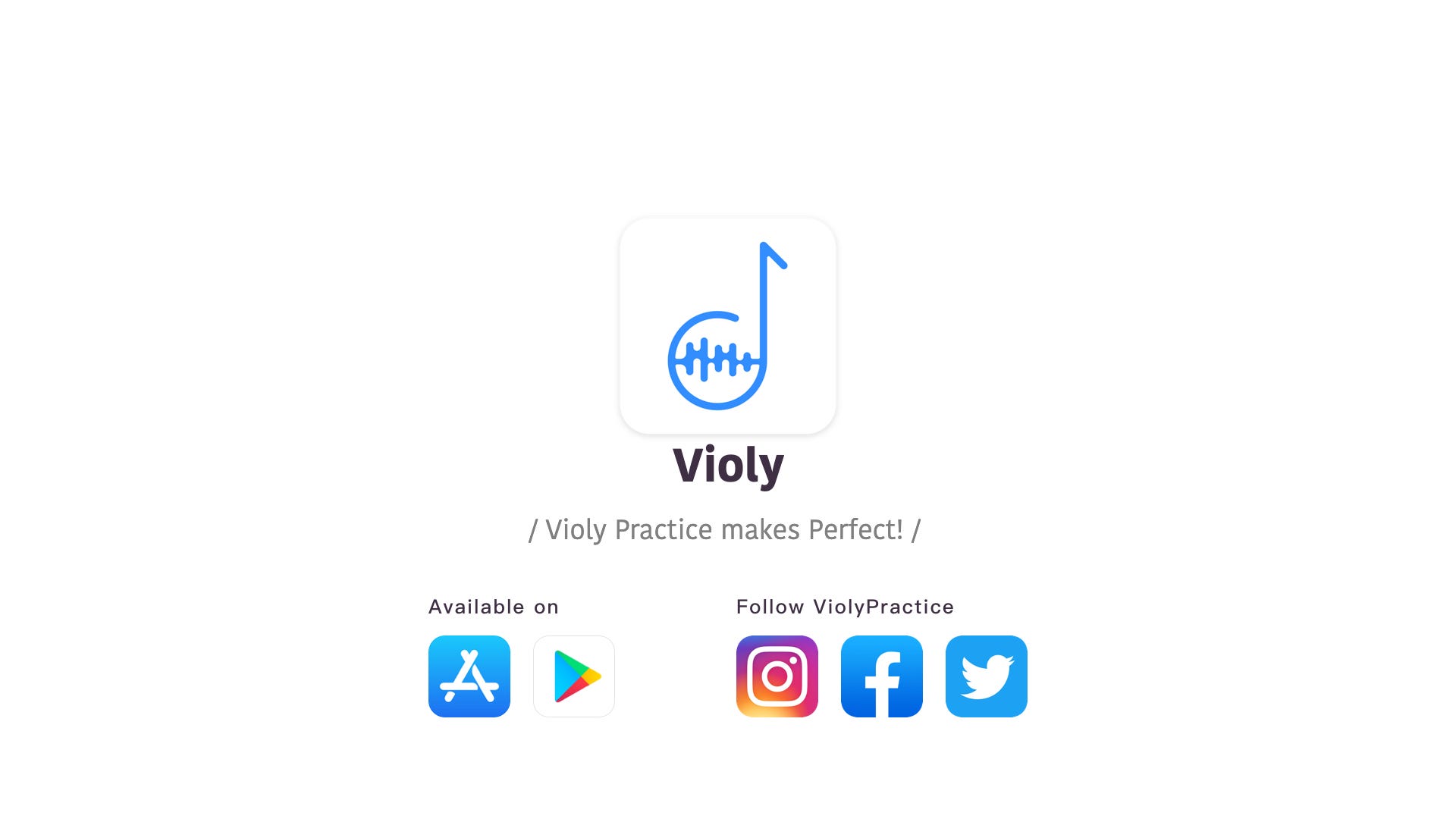First Class: Tips about Enlightenment Teaching of Viola
Wing Ho is a professor of viola in Central Conservatory of Music (CCOM). To set an overall goal of teaching for all viola teachers, he will give a series of Violy master classes focusing on viola teaching. There will be eight parts in total. In the first four parts, he will talk about issues related to basic teaching of viola.
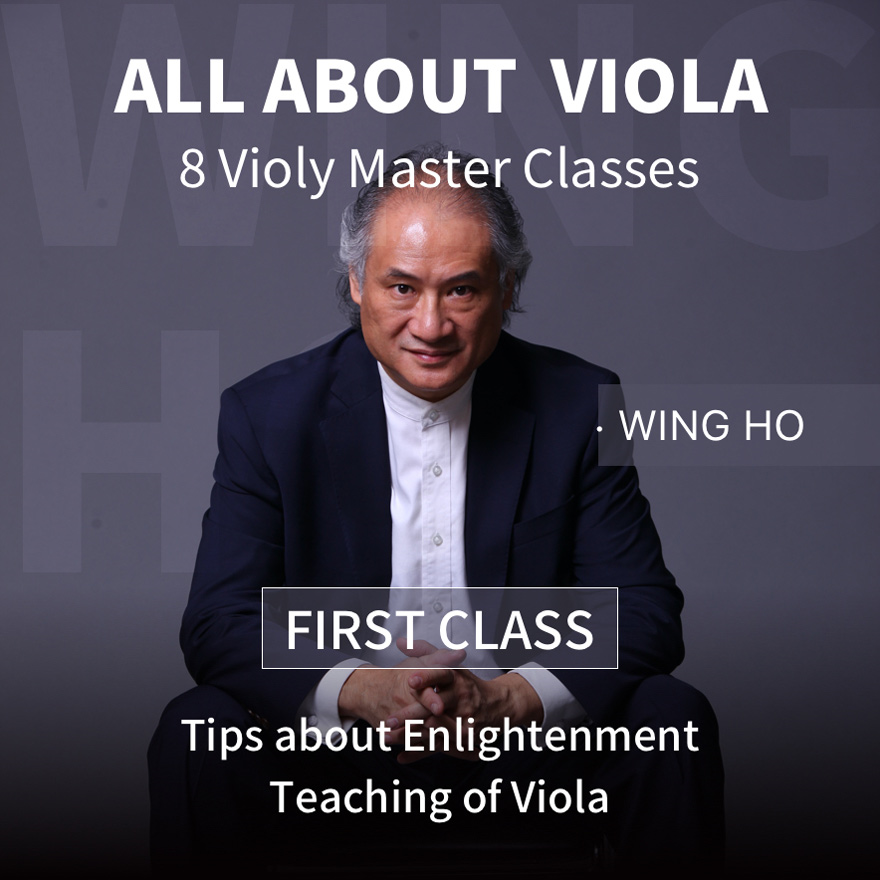
Content of Wing Ho’s lecture is as follows (edited in first person):
Dear teachers and friends, good evening. I am very honored to be here and share my views on viola teaching, which is concerned by all of us.
In this Violy master class, we can discuss why not the enlightenment teaching of viola has developed well.
Actually, I used to play the violin and switched to viola later. Violin was my undergraduate major and I was the concertmaster in the college orchestra. But I switched to viola for my master’s degree simply because I loved the instrument.
It is very important to choose a suitable instrument.
Let’s start the lecture and talk about elements related to enlightenment teaching of viola.
Does Viola Playing Require Special Physiological Conditions?
Just like basketball players, those who are tall with sharp minds and flexible limbs are definitely suitable for playing the viola. But in fact, most world-famous violists are not tall, and most of them are female.
Those who play the viola professionally are used to customizing their own instruments. The length range of the body is 405–420 mm, which is the most commonly used. Of course, the bigger the viola, the louder and deeper the sound. Selecting suitable instruments according to the players’ body build is the most important. Some parents may let their children play on a bigger viola first and adapt to it gradually, which is very inadvisable. Children are likely to get tired from playing on bigger instruments, have incorrect postures, and have a pain in the neck or even ache all over.
In my opinion, viola playing does not require special physiological conditions.
The most suitable physiological conditions are:
· Higher height;
· Longer arms and bigger hands;
· Longer little fingers will be even better.
But children with smaller hands, especially those whose little fingers are shorter, can also meet technical standards after being specially trained.
Viola Sight Reading
There are two types of sight reading:
· For those who switch to viola from violin;
· For those who start to learn viola from scratch.
Four open strings of violin are “GDAE”, while that of viola are “CGDA”.
The most effective method to memorize the fingering is to combine positions of notes in the staff and the corresponding fingering together. Students are supposed to train themselves in this way from the beginning.
Find the positions of notes in the staff and the pitch names in the following picture:
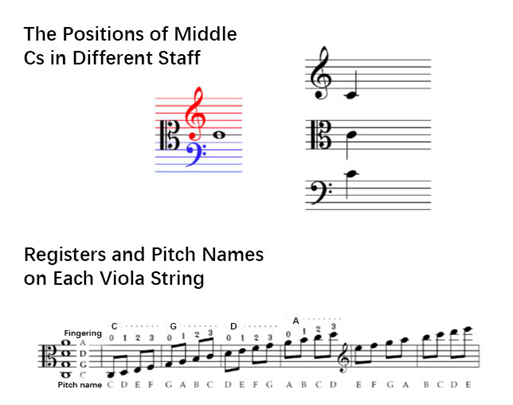
We can ask students to start from easy etudes and mark more fingering on the sheet music first. Then we should let them reduce the number of marks and gradually develop the habit of music reading. For example, as long as they can do the sight reading of Wohlfahrt’s Etude №1 completely, they can move on to Etude №2. After being able to do the sight reading of ten or more etudes, they are likely to form the habit of reading music.
Children have a good memory, but are not willing to read music at the beginning. Therefore, some students may memorize the whole sheet music after practicing for several times. When they are playing in viola lessons, they seem to look at the sheet music, but in fact, they are just doing the “recite-playing”. When the viola teacher tells them that there are wrong notes, they cannot even find where the wrong notes are.
The Requirements of Music Reading
Once students start to learn viola, they are supposed to understand the meaning of all marking on the sheet music and form the habit of reading music as soon as possible. The habit of reading music plays a foundational role in enhancing the ability of sight reading, improving the accuracy of playing, and playing professionally in the future.
Start to Learn Viola from the Scratch
In fact, for me, the viola teaching in Western countries is worth learning. Currently, my country has already had the condition to learn from other countries. The optimal choice is learning viola from the beginning, which can avoid the mental imbalance of switching from violin to viola. I strongly recommend students learn viola from the scratch.
First of all, we should make sure to select viola of the right size for children. I would like to share my own methods here.
The measurement of size of viola is different from that of violin. Violin sizes are measured as 3/4, 1/2, 1/4, 1/8 and 1/16, while viola sizes are calculated by inch, such as 11, 12, 13, 14, 15 and 16 inches.
However, even though we use this method, we cannot accurately calculate the exact size of viola for children of different build. Later I will introduce a simple measuring method, which can help viola teachers select suitable small-sized violas for students.
Picking viola strings for small-sized violas is another significant step. It also greatly affects the popularization of viola in China. Viola strings for adults cannot produce sound on small-sized violas, because small instruments do not have enough tension. If we use violin strings on small violas and replace the G string with C string of viola, we cannot play the instrument well, because the tension does not match.
Currently, we have already developed viola strings for small-sized violas using high-tech measures. The strings have been used for over eight years on the market, which are mature products and can completely meet the demands of children who use small-sized violas.
As consumables, strings need to be changed after being used for some time, even though they are not broken then. Since strings are likely to produce muffled sound, go out of tune or even become unresponsive after being used for a long time, we should always prepare a set of spare strings.
Sounding Point
The contact position of bow hair on viola strings is a little lower than that on violin strings, which is mainly to increase the natural weight.
The distance between the viola bow and the bridge is supposed to be closer than that between the violin bow and the bridge. There are five contact positions of bow hair on viola strings between the fingerboard and the bridge, among which the optimal ones are the third and the fourth contact positions.
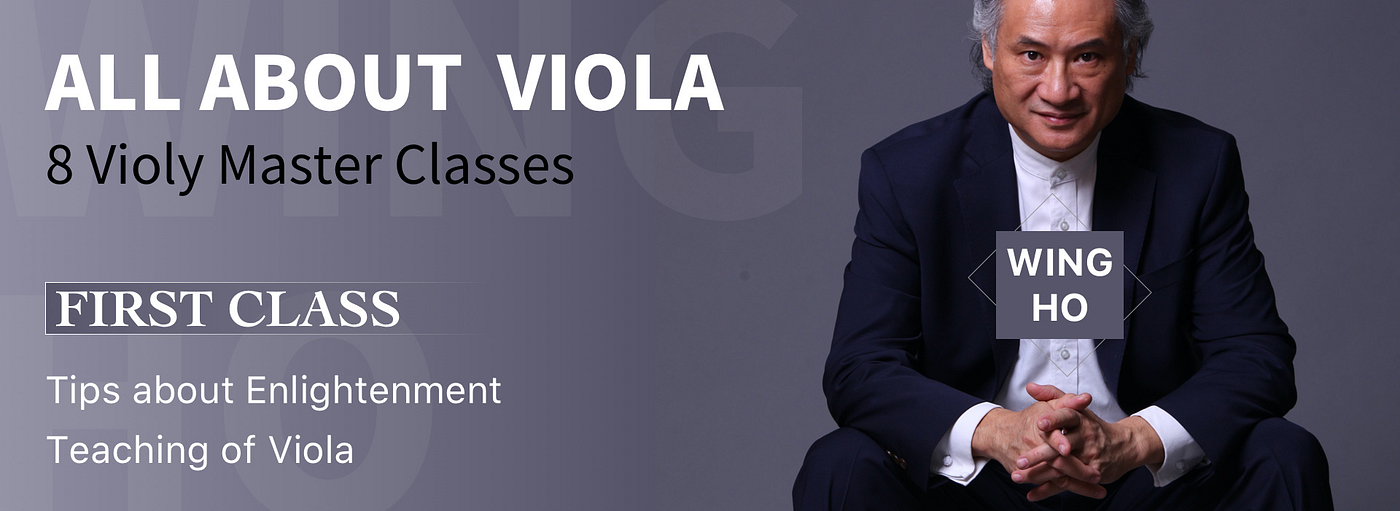
Suggested Viola Books for Viola Beginners
There are a variety of books for viola beginners and most of them are in foreign languages.
First, I would like to introduce Tutorial of Advanced Viola Training edited by Shanghai Conservatory of Music (SHCM). In my opinion, this set of books is comprehensive with additional etudes and other pieces. There is also another set of high-quality viola books edited by SHCM, which is called Tutorial of Basic Viola Training.
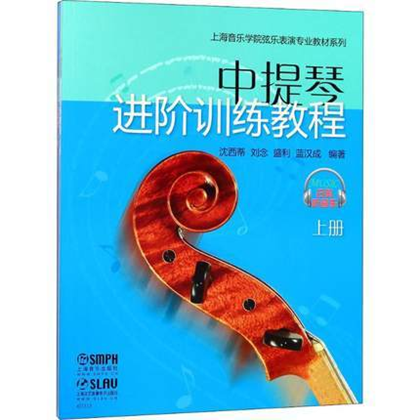
As for foreign viola books, the most popular set of books is Suzuki Viola School. The author paid much attention to the selection of pieces. There are warm-up exercises for each piece. I think the teaching effect of this handy set of books will be better if some traditional etudes are included.
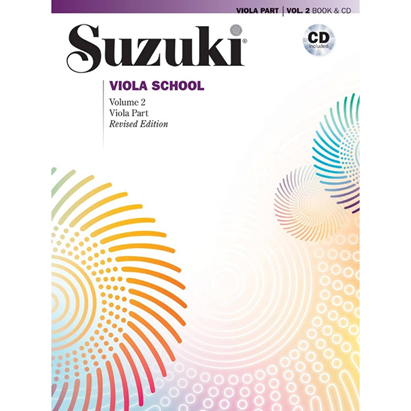
Another set of viola books I would like to recommend is The Sassmannshaus Tradition: Early Start on the Viola. It contains a variety of pieces with illustrations. The sheet music is exquisite.

Also, for groups like junior orchestras in school, they use tutorials of learning string instruments from scratch for group teaching.
Many teachers misunderstand that textbooks of grading test are training tutorials. Here I do not make comments on grading tests, but I think textbooks of grading test cannot be used as systematic learning tutorials.
I recommend teachers use western music for enlightenment teaching instead of Chinese folk songs, because Chinese songs contain a great number of glissandi and notes producing unsteady sounds, which can impact on students’ learning in the future.
Questions Related to Small-sized Violas
Now I would like to introduce the measuring method I mentioned above in detail.
In my opinion, children must have instruments of suitable sizes in all stages of music learning, which can improve the comfortableness and help them give full play to their performing skills in all stages.
Small-sized violas have ten sizes in total: from 400 mm, the smallest size, to 620 mm. A difference of 20 mm exists between every two adjacent sizes. All students of three to fourteen years old can find suitable sizes for themselves.
The measuring method is as follows:
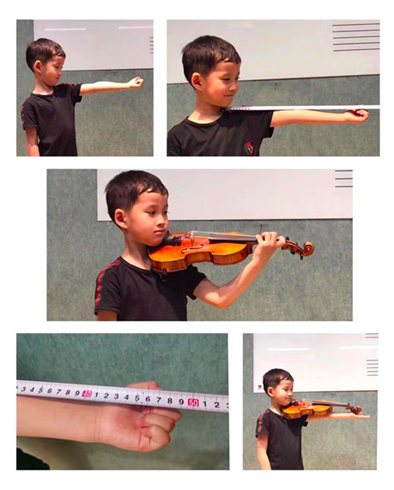
The length range of violas of all sizes is as follows:
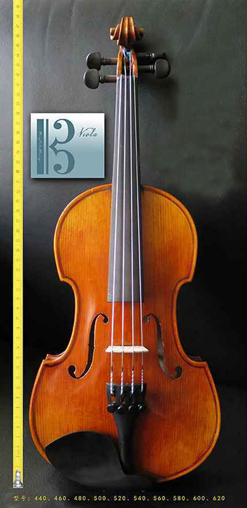
How do we confirm whether the size of viola is suitable or not? Let’s have a look at the picture below:
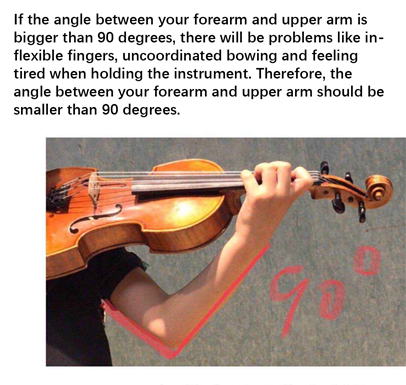
Solfege, Music Theory and Rhythm Training
Solfege, music theory and rhythm should be learned in the meanwhile. It is better if students can lay a good foundation for viola learning in advance. In the beginning stage, teachers can introduce basic music theory and rhythm training into the teaching during viola lessons.
Students should be trained to learn solfege by professional teachers. The process can be long and slow, so teachers are not supposed to push their students too hard. Actually, every time when students enter a different stage, the auditory function of their ears will improve in some degree. This step is vital for every young learner.
Solve the Problems Related to Viola Teachers
Violin teachers who teach viola at the same time should recognize the similarities and differences between violin playing and viola playing. They are supposed to know more about literature on viola, have a rich repertoire and understand how to select suitable etudes and other pieces for students.
Besides, viola teachers should be clear about how to choose instruments of right sizes for students. Also, teachers are supposed to know more about the adjustment and maintenance of the instrument, such as tuning and adjusting the angle of the sound-post and the bridge.
What’s more, during viola lessons, viola teachers should communicate well with both students and their parents verbally and mentally. They can make friends with students but are supposed to know their positions as teachers.
Have a HAPPY practice!!
All About Viola - Viola Teaching Class
All about Viola 1 | Tips about Enlightenment Teaching of Viola
All about Viola 2 | Basic Teaching of Viola
All about Viola 3 | Viola Bowing Techniques
All about Viola 4 | Movements of the Left Hand
All about Viola 5 | Viola Exercises for Beginners
All about Viola 6 | Common Viola Repertoire Catalog
All about Viola 7-8 | Music Learning and Career Choice
More Violy Master Class Articles:
Cello Master Class - Wu Linfeng
Violin Master Class - Wang Boyang
Violin Master Class - Gu YingLong
#ViolyPractice makes Perfect!!
Follow us on: Violy.app
